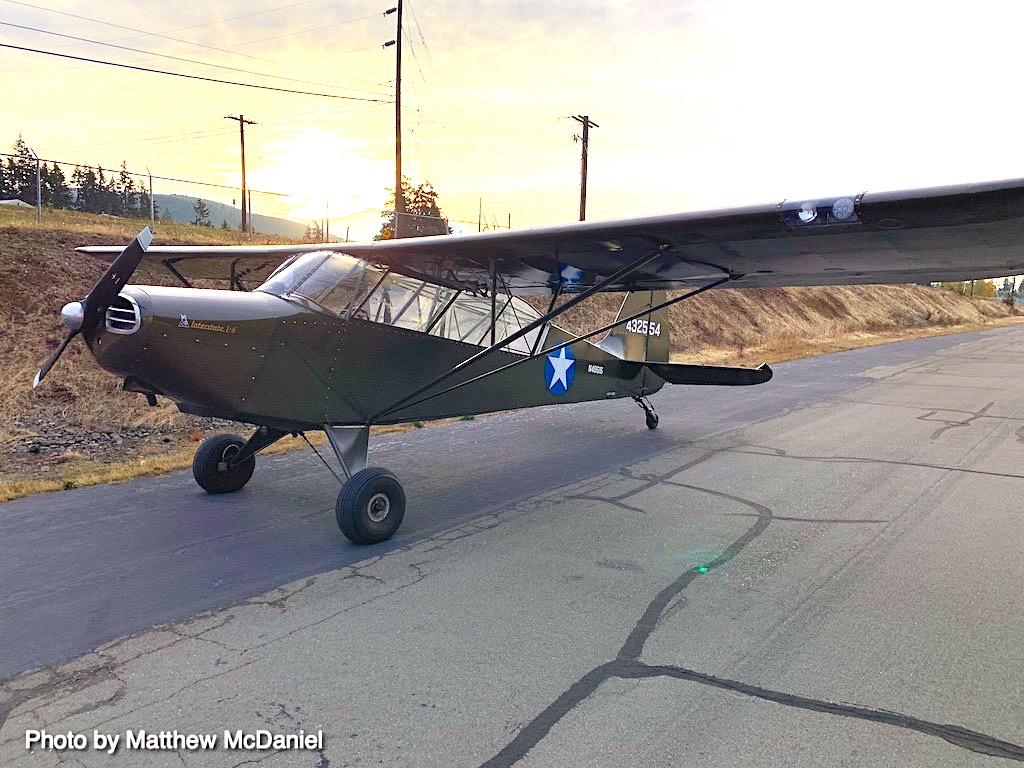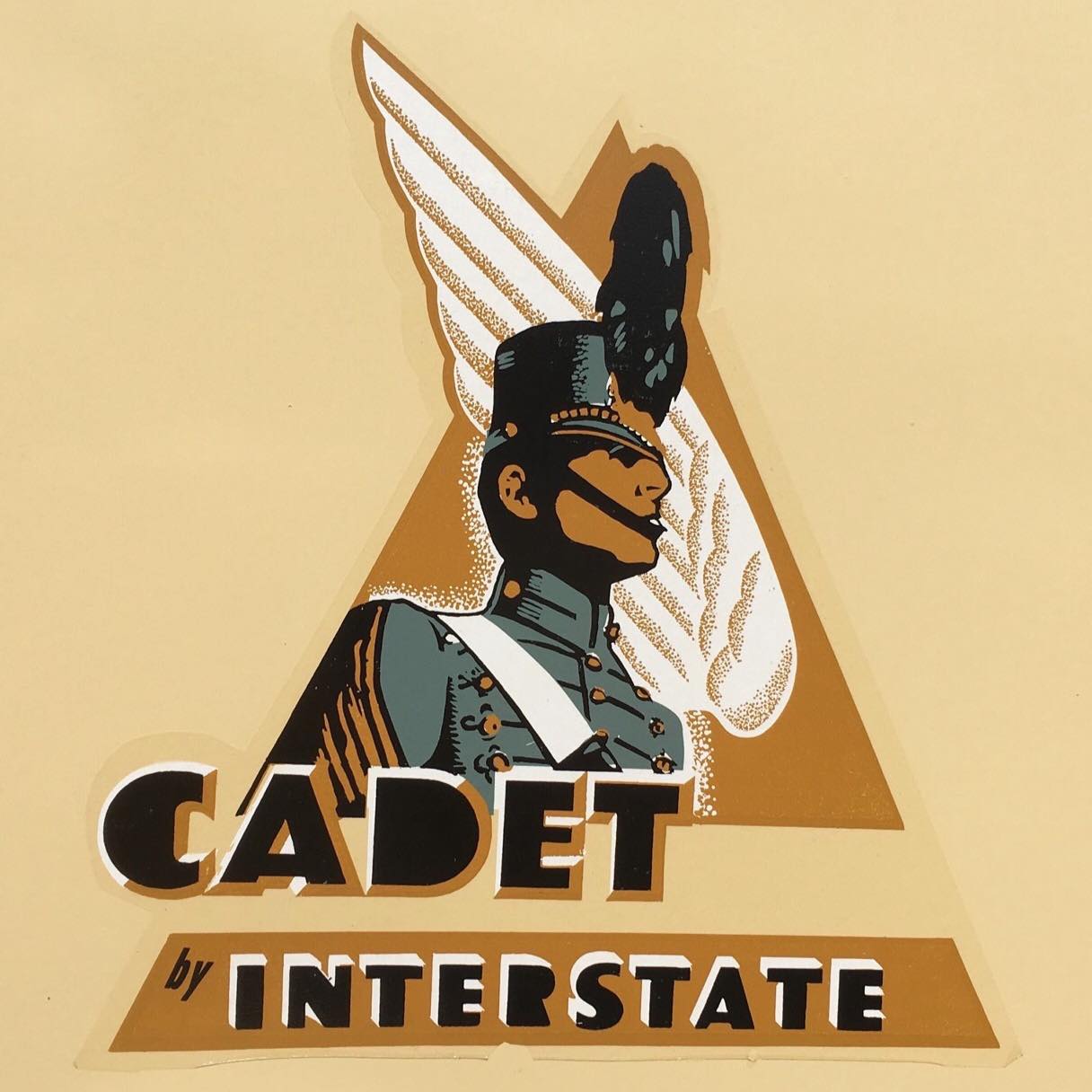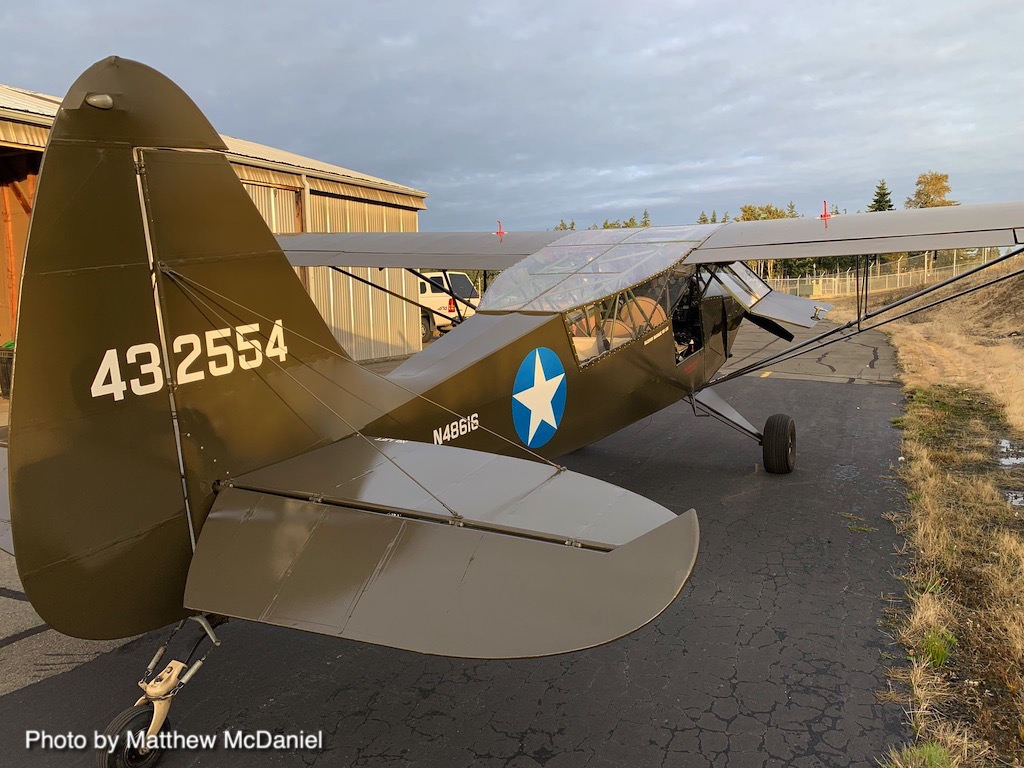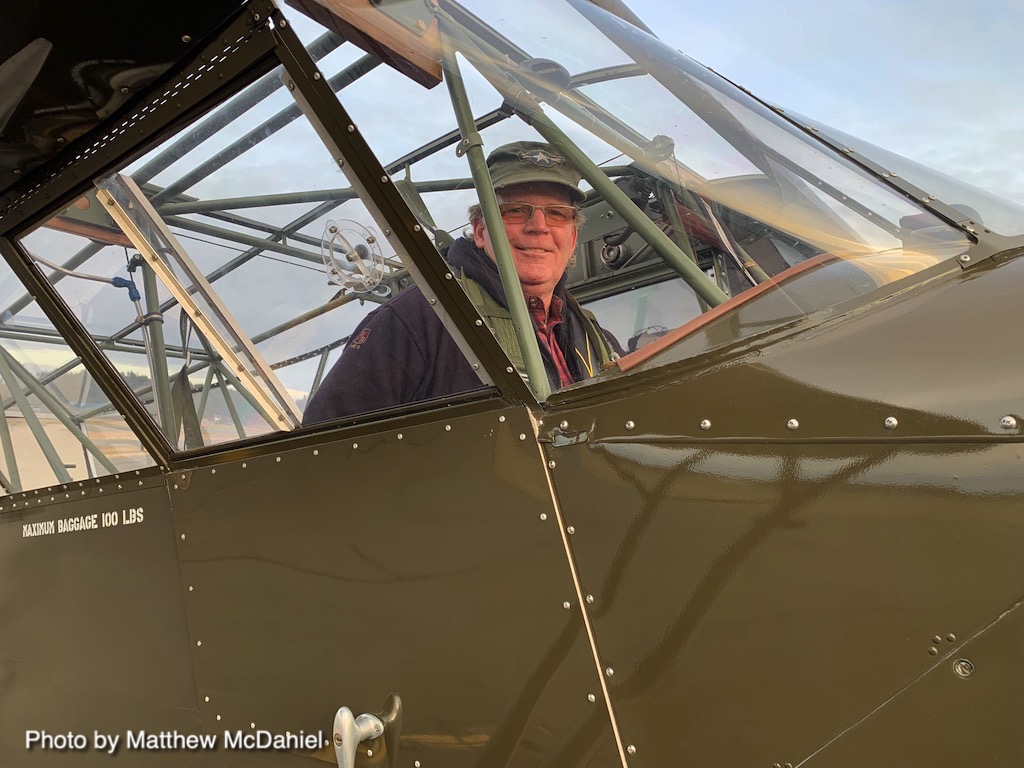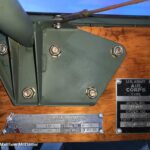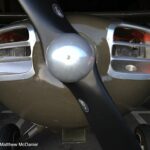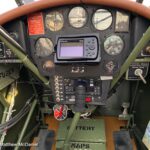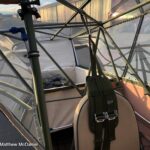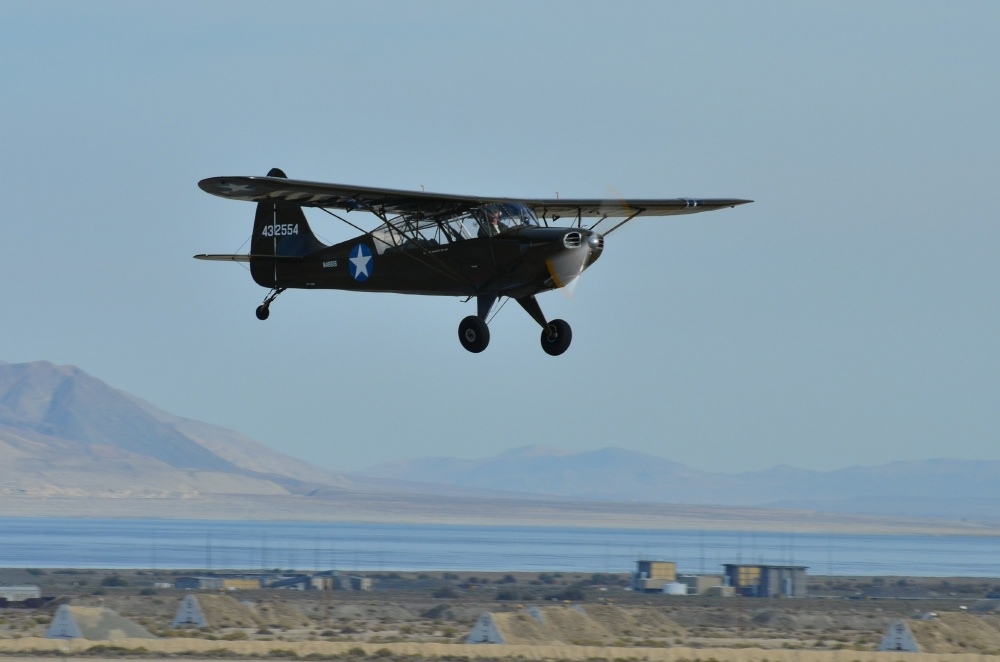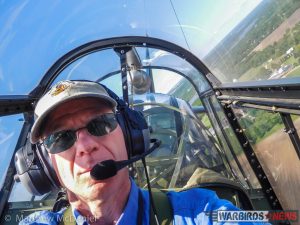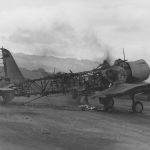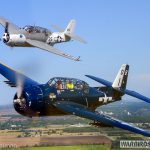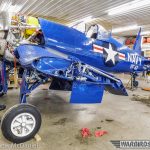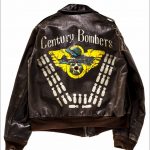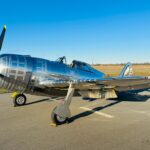by Matthew McDaniel
Authors Note: This article is the opening episode in what I hope will become a complete series describing U.S. military liaison aircraft types, incorporating as many varieties as we can find flying actively. I would appreciate hearing from anyone associated with an exemplary, airworthy example of any L-bird model via the contact details at the end of this piece.
Vintage aircraft don’t truly have owners – they have caretakers – dedicated individuals who endeavor to save a piece of history not just for their own enjoyment, but for the greater purpose of preservation and education. However, for each such caretaker, a time invariably comes when they must hand their torch over to another careful custodian. Stanley Hall and his beautiful Interstate L-6 find themselves at just such a crossroads. After decades of ownership and 14 years of post-restoration flying activities together, Stan is now seeking a new caretaker for his beloved aircraft. Whomever that person is, they will very likely become a focus of attention at every airport fuel pump or cafe they stop at.
Interstate Aircraft of El Segundo
In 1937, the Interstate Aircraft & Engineering Corp. opened a factory in California nearby what is now known simply as LAX – Los Angeles International Airport. By the end of 1940, they had developed, certified, and put their S-1 Cadet into production. Similar in most respects to the tandem tube-and-fabric designs which Taylorcraft, Piper, and Aeronca already had in production, it flew originally on only 50hp. Early production variations (S-1A’s) used 65, 85, and 90hp versions of the Franklin 4AC engine.
Meanwhile, Interstate developed the S-1B1 for military service; the variant incorporated a number of changes to the earlier S-1, including a widened and lengthened greenhouse-style plexiglass cockpit enclosure which offered panoramic visibility. The US Army Air Corps initially designated this variant as the XO-63. It had a geared Franklin 4AG-199-H3 (a military O-200-5) up front to power it which, as the original manual states, developed 113hp at 3,500 RPM.
O-birds were Observation aircraft in US Army Air Corps parlance, but when that organization became the US Army Air Forces (USAAF) in June, 1941, the active O-birds all underwent redesignation to become L-birds (where the “L” represented Liaison). As such, the O-63 became known as the L-6, making Interstate’s ‘Grasshopper’ the last WWII-era type to hold both O and L designations. The USAAF took delivery of 250 L-6’s. Like the Cadet before it, the L-6 was built more ruggedly than its primary competitors, the L-2, L-3, and L-4. It was considered a superior aircraft for rough field and Short Take Off and Landing (STOL) operations due to its heavier-duty undercarriage suspension system and large flaps, which could deploy at either 20 or 60 degrees. However, the L-6 cost almost three times what its competition could be built for. It also suffered from engine overheating problems, likely rooted in the high RPM settings which its geared Franklin engine had to achieve in order to produce the rated power. These problems were never fully overcome during the L-6’s short military service life. As a result, all of them were restricted to Stateside operations and, after the war, declared surplus with almost immediate effect.
Interstate also built the largely unknown L-8. Eight Interstate S-1A1 Cadets (not to be confused with the S-1B1 [L-6] Grasshoppers) were ordered for the Bolivian Air Force and designated as L-8As. So, if you include the single prototype XO-63/XL-6, the 250 production O-63A/L-6As and the eight L-8As, Interstate built precisely 259 military aircraft. Complementing this production run were the roughly 315 civilian S-1 and S-1A Cadets. Interstate also participated in an “assault drone” development program during WWII (which was eventually canceled in favor of more conventional weapons) that resulted in the production, testing, and limited use of 195 Interstate TDR ‘flying bombs’.
Post-War Cadets and L-6’s
Soon after the end of WWII, Interstate’s owners decided to focus the company’s manufacturing capabilities on appliances. They sold their line of aircraft to Harlow Aircraft Co., which then sold them on to Call Aircraft Co. (CallAir) in 1946 without having ever resumed production. CallAir rebuilt and sold several S-1, S-1A, and L-6 models, including various engine upgrades, however they produced only two examples of their own, designated as the S-1A-90C. The subtle change in nomenclature was to distinguish this variant, which used a 90hp Continental engine, from Interstate’s S-1A-90F, which was Franklin-powered.
Throughout the late 1940s and 1950s, many L-6s were “civilianized” for service as bush and/or personal planes. Most had their greenhouse enclosures reduced to more closely resemble the Cadet and many received upgraded engines. These engines provided additional horsepower while also eliminating the overheating issues which had plagued the Franklin-powered L-6s. Upgraded L-6s proved capable and popular bush planes in Alaska and beyond. Eventually, Arctic Aircraft obtained the manufacturing rights for the design, and certified the improved S-1B2 model, which included structural upgrades, cargo door and pod options plus 150hp or 160hp versions of the Lycoming O-320 engine. Between 1975 and 1985, the S-1B2 was marketed as the Arctic Tern; 32 were produced.
A Man and His L-6
Like many of us, Stanley Hall was exposed to aviation from an early age. As a passenger in his father’s Piper Tri-Pacer and, later, a Cessna 182, airsickness plagued Hall to the point where his attention focused on motorcycles instead. It wasn’t until he was living in Alaska during his late teens, surrounded by taildraggers and floatplanes, that his own passion for aviation began to take root. At 20, he returned to Los Angeles, where his father was wrapping up the restoration of an Aeronca 65TC Defender. That kind of flying felt like ‘dirt-biking-with-wings’ to Hall… the hook was set! He soon bought the Defender from his father, earned his Private Pilot Certificate (in 1983), and spent a couple of years enjoying low/slow flying before family obligations became a priority.
L-6 construction number #78 has an official manufacture date of March 21, 1943. The USAAF accepted it two days later as serial number 43-2635. The aircraft’s military and early post-war history are largely unknown at present because its logbooks for the period up until 1950 went missing decades ago. What is known, however, is that its owner in the early 1950’s used the L-6 actively. He upgraded the engine to a 125hp O-290 and flew it from Mexico to Alaska and to all manner of points in between. If the hours of travel he spent in its cockpit are any indication, he must have really loved the airplane. Even so, in 1955, the aircraft log entries suddenly ended.
Sadly, soon after that someone disassembled the aircraft and placed it in storage, a condition in which the airframe remained for more than five decades. In 2006, after 13 years of owning and storing the L-6 as a project, Stan moved it by road for a 5th and final time. In Spokane, Washington the aircraft wound up in Al Bird’s hangar, and the man promised to focus his attention solely on restoring the L-6 until it was done. Bird estimated that the work would take a year, however, in typical vintage aircraft fashion, both his cost and time estimates would prove to be about half of what was actually required!
The goal, from the beginning, was to make the L-6 as good as new and to re-militarize its appearance while not getting bogged down with an unrealistic devotion to absolute originality. Hall wanted the aircraft to be both safe and reliable, but also maintainable and flyable in today’s airspace and Air Traffic Control (ATC) environment. So, concessions to originality were made where necessary while striving to maintain the overall look and feel of a 1943-built USAAF L-6.
The most obvious concession involved power; Hall elected to go with a common O-320 engine, both for the upgrade to 150hp and for the ease of maintenance and parts availability. Also, a Scott 3200 tailwheel was selected in lieu of the unique original unit which would be difficult to find replacement components for. The main tire size was increased slightly to afford superior turf runway flexibility; modern Cleveland wheels and brakes were also added. Inside, four-point Hooker Harnesses replaced the original lap belts – even so, these sturdier seat restraints still have a military look to them. The instrument panel, while containing a GPS unit, modern transponder and communications radio, is primarily made up of original WWII instruments, components, and functionality. Stanley’s favorite modification is the simple addition of Stinson grills across the cowling air inlets. While they are not original to the L-6 design and serve no functional purpose, he feels that they perfectly accent the aircraft’s era and panache. In late 2008, the newly-pristine L-6 finally returned to the air after 54 years on the ground; it has flown regularly ever since.
Flying the L-6
I have flown many aircraft types of this category and era so I have a fairly wide range of experiences to draw from. If I had to compare the L-6 to something relatively well-known, I would choose a modern Super Cub. With the same 150hp on tap, takeoff (using the L-6’s 20-degree flap setting and retracting them early in the climb) is very similar to a standard Super Cub. With two adults and full fuel on board, the initial climb exceeded 1,000fpm (feet per minute) and settled in at around 800fpm with flaps up at 80mph Indicated Air Speed (IAS).
The L-6 bests the Piper PA-18 in many areas. The controls in all axes offer no noticeable friction; they are smooth as butter and almost perfectly harmonized. Fingertip control is all that is required throughout most of the speed range if the elevator is kept in trim. Doing so requires no more than a half-turn fore or aft on the trim crank positioned beside the front pilot’s left hip. The rudder is authoritative, making it easy to keep the yaw axis coordinated with small rudder inputs (to match the equally small pitch and roll inputs required for most maneuvers). I noted almost no adverse yaw in aileron application – a true rarity in antique taildraggers. Slow flight and stalls were easy to control right down to stall speeds in the high 30s. Stall recovery required only a gentle release of back pressure followed by appropriate power application. At a cruise power of 2,450rpm or so, the L-6 was indicating 108mph in level flight.
Hall likes to fly his traffic patterns very close to the runway and I needed no convincing to follow suit. The tight pattern allows a mostly idle descent with full flaps (60 degrees) applied on base. On final, the descent rate and angle can be nicely adjusted via forward slips of variable magnitude. The L-6’s touchdown manners are docile in both wheel and three-point landings. We were able to achieve landing lengths of just 200 feet on a paved runway without any headwind assistance nor touching of the brakes until the aircraft was almost stopped naturally. This was using an admittedly over-conservative approach speed of 60mph IAS; given the aircraft’s rarity, we saw no need to push any limits.
Speaking of rarity, of the original 250 Interstate L-6s, only 18 are currently registered in the United States and, of these, only a handful are known to be airworthy. While Stan has taken his example to EAA AirVenture Oshkosh 2014 and many regional fly-ins across the western U.S., it is still a type rarely seen in warbird lineups or fly-by displays. Hopefully, that will change in coming years if other examples are restored and returned to flight status. As for Hall’s lovely Grasshopper, it is now for sale and awaiting its new caretaker and, hopefully, many more years of flying adventures to come. Keep ‘Em Flying!
About The Author: Matthew McDaniel is a Master & Gold Seal CFII, ATP, MEI, AGI, & IGI, and Platinum CSIP. In 32 years of flying, he has logged over 20,500 hours total and over 5,700 hours of instruction given. As the owner of Progressive Aviation Services, LLC (www.progaviation.com), he has specialized in Technically Advanced Aircraft and Glass Cockpit instruction since 2001, yet retains a passion for teaching in and learning about antique taildraggers. Currently, he is also a Boeing 737-series Captain for an international airline, holds 8 turbine aircraft type ratings, and has flown over 120 aircraft types. Matt is one of fewer than 15 instructors in the world to have earned the Master CFI designation for 10 consecutive two-year terms. He can be reached at: [email protected] or 414-339-4990.
Copyright 2022, Matthew McDaniel.
Publication rights granted to Vintage Aviation News. All other rights reserved by the author.







